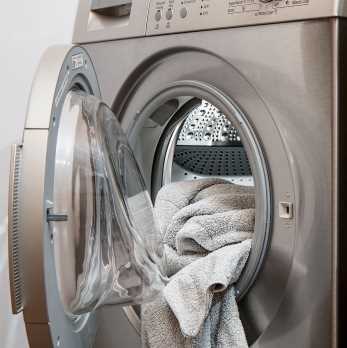What you need to know about efficient washing machines for your home
Selecting the right washing machine for your household is more important than many realize. Today's efficient washing machines offer significant improvements in water usage, energy consumption, and cleaning effectiveness compared to models from just a decade ago. Whether you're replacing an aging unit or setting up a new home, understanding the options available can help you make a choice that saves money, reduces environmental impact, and delivers superior cleaning performance for years to come.

Understanding efficient washing machine technology
Modern efficient washing machines incorporate several technological advances that reduce resource consumption while improving performance. Front-loading machines typically use gravity to tumble clothes through a smaller amount of water, while high-efficiency top-loaders employ sophisticated wash systems that require less water than traditional agitator models. Many efficient machines feature sensors that detect load size and soil level, adjusting water and energy use accordingly. These smart technologies can reduce water consumption by up to 50% and energy use by 25% compared to conventional models, while still delivering excellent cleaning results through optimized drum movements and wash cycles.
Key factors that affect washing machine cost
The price of washing machines varies widely based on several factors that savvy shoppers should understand. Entry-level models with basic functionality typically start around $400, while premium machines with advanced features can exceed $1,500. Brand reputation significantly influences price, with established names like Whirlpool, LG, Samsung, and Maytag commanding premium prices based on reliability records. Capacity is another major cost factor—compact units (2.5 cubic feet) cost less than large-capacity machines (5+ cubic feet) designed for family use. Additional technologies like steam cleaning, Wi-Fi connectivity, automatic dispensers, and specialized wash cycles also increase the price point but may deliver long-term value through improved efficiency and convenience.
Comparing top-loading vs. front-loading washing machine options
The choice between top-loading and front-loading designs represents one of the most fundamental washing machine options for consumers. Front-loaders excel in efficiency, typically using 40-60% less water and 30% less energy than traditional top-loaders. They also offer gentler fabric care through tumbling action rather than agitation. However, they generally cost $200-400 more upfront than comparable top-loaders and may require bending to load and unload. Top-loaders remain popular for their accessibility, shorter cycle times, and lower initial price points. Modern high-efficiency top-loaders bridge the gap, offering better efficiency than traditional models while maintaining the familiar top-loading design that many users prefer.
Advanced features worth considering in efficient washing machines
Today’s washing machines offer numerous advanced features that can enhance convenience, efficiency, and performance. Steam cleaning cycles can remove stubborn stains and allergens more effectively than water alone. Automatic detergent dispensers store multiple loads’ worth of detergent, dispensing precisely the right amount for each cycle. Wi-Fi connectivity enables remote monitoring and control via smartphone apps, while delayed start options let you run cycles during off-peak energy hours. Vibration reduction technology makes machines quieter and suitable for installation on upper floors. When evaluating these features, consider your specific household needs and whether the premium price justifies the benefits for your situation.
Energy and water efficiency ratings explained
Understanding efficiency ratings helps consumers make informed decisions about long-term operating costs. In the United States, the ENERGY STAR certification indicates machines that exceed federal minimum efficiency standards by at least 25%. Look for the yellow EnergyGuide label, which estimates annual operating costs and energy consumption. The Integrated Water Factor (IWF) measures water efficiency—lower numbers indicate more efficient machines. The Combined Energy Factor (CEF) evaluates overall efficiency considering both energy and water use. When comparing models, remember that a machine with a higher upfront cost but better efficiency ratings often proves more economical over its lifetime, especially in households that do multiple loads per week.
Comparison of efficient washing machine models
When selecting an efficient washing machine, comparing specific models helps identify the best value for your needs. Here’s how some popular energy-efficient models compare:
| Model | Type | Capacity | Key Efficiency Features | Estimated Price |
|---|---|---|---|---|
| LG WM4000HWA | Front-Load | 4.5 cu. ft. | ENERGY STAR certified, TurboWash 360, AI technology | $999-1,099 |
| Samsung WF45R6100AW | Front-Load | 4.5 cu. ft. | ENERGY STAR certified, Steam function, Self-Clean+ | $799-899 |
| Whirlpool WTW7120HW | Top-Load | 5.3 cu. ft. | ENERGY STAR certified, Load & Go dispenser | $899-999 |
| GE GFW850SPNDG | Front-Load | 5.0 cu. ft. | ENERGY STAR certified, UltraFresh vent system | $1,099-1,199 |
| Electrolux EFLS627UTT | Front-Load | 4.4 cu. ft. | ENERGY STAR certified, Perfect Steam, 15-min fast wash | $1,099-1,199 |
Prices, rates, or cost estimates mentioned in this article are based on the latest available information but may change over time. Independent research is advised before making financial decisions.
Maintaining efficiency throughout your washing machine’s lifespan
Even the most efficient washing machine requires proper maintenance to maintain its performance over time. Regular cleaning of the drum, dispensers, and filters prevents buildup that can affect efficiency and cleaning performance. For front-loaders, wiping door seals and leaving the door ajar between uses prevents mold and mildew growth. Using high-efficiency detergents as recommended by manufacturers ensures optimal cleaning while preventing excess sudsing that can damage components. Checking and cleaning drain pumps and water inlet filters annually prevents clogs that reduce performance. With proper maintenance, today’s efficient washing machines typically last 10-15 years, making them a worthwhile investment for most households.
Choosing an efficient washing machine involves balancing upfront costs with long-term savings on water, energy, and detergent. By understanding the technology, comparing options, and maintaining your machine properly, you can enjoy superior cleaning performance while reducing your environmental footprint and utility bills for years to come.




